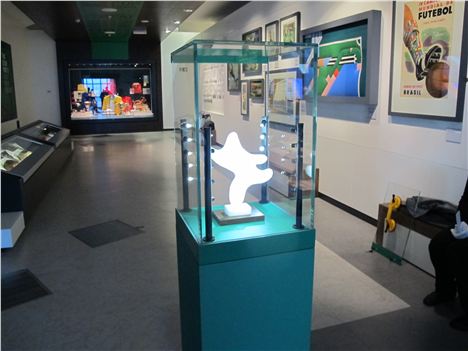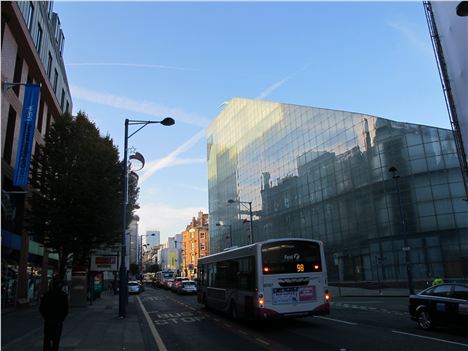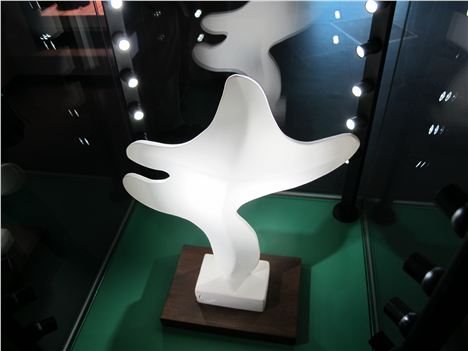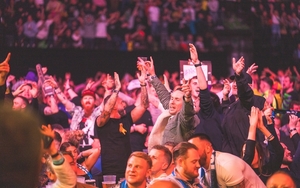THE SPANISH seem to have a monopoly on excellent but tiny midfielders. Now, alongside Iniesta, Silva and Mata, we have Picasso's attractive 11 inch mini-footballer - or 'Footballeur'.
This is a body in motion, it is ceramic vitalised. 'Footballeur' captures the joy of football, its exuberance allied to skill and control.
This chap's a little older than the his compadres though. He was produced at the Madoura Pottery in Vallauris in the South of France in the 1960s, after Picasso had moved to France from Spain.
The ceramic figurine was bought by France-based British football memorabilia collector, Mark Briere-Edney, at a Christie's auction for around £40,000.
Gallery Director, Kevin Moore told Confidential, "The buyer called saying that the National Football Museum seemed like a good place to exhibit the work. He asked whether we might want it on loan?
"I was speechless for a minute. Of course I wanted it on loan. I wasn't going to say 'no' to an artwork from perhaps the most famous and renowned twentieth century artist.
"It's such a lovely piece too, so alive, we've made a special cabinet for it right at the front of the exhibition spaces. It's on loan for twelve months and we want to really show it off."
Moore is right the piece is lovely, a swish and swoosh of football action. This is a body in motion, fluid, it is ceramic vitalised, given dynamism. 'Footballeur' captures the joy of football, its exuberance allied to skill and control. The beautiful game encapsulated.
The leg of the work is drawn back as if to strike the ball across the field to a wide player, or maybe even drive the ball into the roof of a distant net. It's simply beautiful, and makes you want to kick a ball about.
Many avant garde artists of the twentieth century were fascinating by sport, its strength, certainty and its associations, in their minds, with dance. This can be linked with the passion for eurythmics in the early part of the century, the idea of harmonious movement as a form of artistic expression.
Picasso as Doctor Mike O'Mahony from the University of Bristol, who's consulted on the National Football Museum's acquisition says, "Picasso had a passion for boxing and bull-fighting. When it comes to football, his interest seems to have been motivated by his strong associations with Barcelona.'
What prompted the work we now have in Manchester is probably, says O'Mahony, the appearance in the 1961 European Cup Final of Barcelona against Benfica.
"Although Barcelona lost 3-2," says O'Mahony, "the game clearly inspired Picasso. Four days after the final he produced a lithograph representing six footballers in blue and red."
The ceramic works would follow. And in October 2012 one would arrive in Manchester. Given our city's football history, given the National Football Museum's excitement to have it on loan, where better?
It's good news all round it seems for the museum.
In the fifteen weeks since opening they're received 175, 000 visits, which means they'll probably smash the projected annual guest numbers within twenty weeks.
The National Football Museum is not just attracting the locals either.
"We're currently getting figures on visitors from other parts of the UK and from other countries," says Moore. "But it has been great to see fans from other countries enjoying the museum. Maybe they are even extending a stay in the city because of us. Certainly we had lots of Dortmund fans in the day before and the day after the match with Manchester City in the Champions League. That's gratifying."
The acquisition of works such as the Picasso can only improve an already virtuous situation. One of the great strengths of the museum is that it has appeal beyond the name above the door. Football haters can also find something to love here. 'Footballeur' underlines that - with one kick of his notional boot.
The National Football Museum is at Urbis, Cathedral Gardens, City, M4 3BG. 0161 605 8200. Open: Monday – Saturday 10am-5pm; Sunday 11am-5pm.
You can follow Jonathan Schofield on Twitter here @JonathSchofield

















